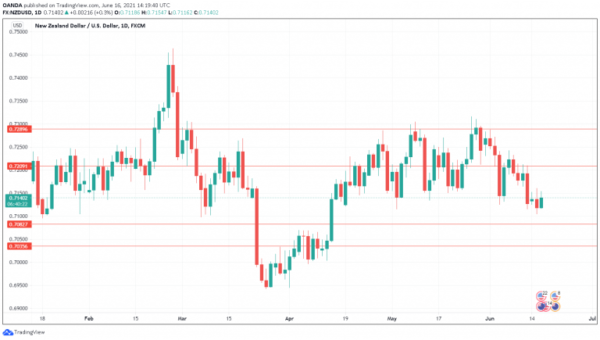On Wednesday, the New Zealand dollar is considerably higher. In European trade, NZD/USD is trading at 0.7144, up 0.36% on the day.
The New Zealand dollar has been under some pressure of late. On Friday, NZD/USD plunged almost 1.0%, as US inflation beat the consensus, sending the US dollar broadly higher. On Tuesday, the pair slipped to a low of 0.7104, its lowest level in two months.
New Zealand has performed well with regard to the Covid pandemic, as the country was quick to close its borders in 2020 when Covid was spreading and causing severe economic downturn across the globe. Still, the country’s economy suffered a downturn in 2020, as the export-reliant economy was damaged by a sharp decline in global demand. Fourth-quarter GDP showed contraction, with readings of -1.0% q/q and -0.9% y/y. With the global conditions improving in Q1, as Covid has receded, the economy is expected to rebound in the first quarter, with a consensus of 0.5% q/q and 0.9% y/y. The GDP report will be released at 22:45 GMT.
If the GDP report comes in at the consensus or higher, we could see the RBNZ respond with a hawkish shift, which in turn would bullish for the New Zealand dollar. Finance Minister Grant Robertson has said that the recovery has been better than expected, and a strong GDP report would increase pressure on the central bank to tighten policy.
The highlight of the week could well be today’s FOMC policy meeting (18:00 GMT). The Fed is unlikely to adjust policy at the meeting, but improved economic conditions and higher inflation have raised expectations that the Fed may be more open to the idea of tapering its massive stimulus programme. The message from FOMC members could have a significant impact on the US dollar. If the Fed sticks to its dovish policy, the US dollar could lose ground. However, any signals that taper talks could be on the table would likely see the greenback post broad gains.
NZD/USD Technical
- There is resistance at 0.7209 and 0.7289
- On the downside, we have support at 0.7082 and 0.7035













